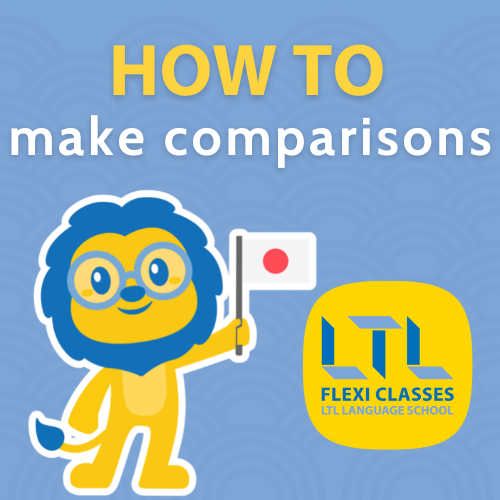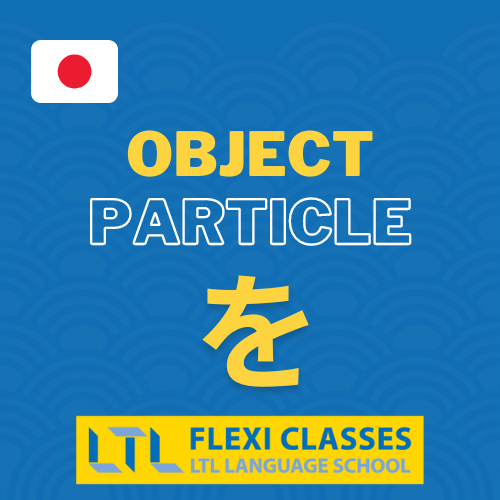N5 Grammar | Making Basic Comparisons in Japanese
Today we are going to teach you how to make comparisons in Japanese with the help of some important comparison particles.
We’ve already mentioned particles in the past and they are a key component of the Japanese language and how sentences are built.
Here is a Complete Guide on 15 Japanese Particles, if you need to review a few of them.
Study time!
Japanese Basic Comparisons | With ほう
Japanese Basic Comparisons | With より
Japanese Basic Comparisons | With ほど
Japanese Basic Comparisons | With 同じくらい
Japanese Basic Comparisons | With 一番

Japanese Comparisons | Comparing Two Objects With ほう
We are often trying to determine what the “best” thing is.
- Where’s the best place to go?
- Which one is the cheapest?
- Is this one more expensive than that one?
- Is this one better than that one? And so on.
Here’s how we express these ideas in Japanese, and let’s start with A is more B (than something else).
| A (noun) のほうが B | A no hou ga B |
| A (い adj) ほうが B | A hou ga B |
| A (な adj) + なほうが B | A na hou ga B |
In this example, what A is being compared to has likely already been stated. B can be any adjective, or an adverb and verb phrase.
| Kanji | Hiragana | Romaji | English |
|---|---|---|---|
| このレストランのほうが高い | このれすとらんのほうがたかい | kono reustoran no hou ga takai | This restaurant is more expensive |
| 安いほうがいい | やすいほうがいい | yasui hou ga ii | Cheap is better/the cheap one is better |
| 静かなほうが好き | しずかなほうがすき | shizukana hou ga suki | I prefer the quiet |
Japanese Comparisons | Comparing Two Objects With より
We can also state what we are comparing in the sentence, using より (yori).
より is attached to the end of the word, meaning “more than”.
It is affixed to what we want to compare something to (not to the main subject we want to speak about).
| A は B より楽しい | A は B よりたのしい | A wa B yori tanoshii | A is more fun than B |
A is what we want to talk about and it is what we are describing as 楽しい.
We can see this if we break the sentence down into parts and remove the より portion:
A は B より 楽しい
> A は 楽しい (A is fun)
It is as if inside this sentence, we are saying, X is fun. How fun? More than Y.
Typically with より, we want to use a verb in the affirmative, as opposed to a negative.
If something is not as big as something else, we will say:
A は B より小さい
A is smaller than B
Rather than:
A は B より大きくない
A is less big than B
Japanese Comparisons | “as…as” with ほど
To make these comparisons sound more natural, we can use ほど (hodo).
ほど indicates a degree, or extent, and translates to “as ~ as”.
Let’s write again the latest sentence example using ほど:
| A は B ほど大きくな い | A wa B hodo ookikunai | A is not as big as B |
ほど is also useful when constructing sentences to convey that something is equal to something else.
| A は山ほどある | A wa yama hodo aru | There is as much X as a mountain (there is a ton of A) |
| バラほど赤い | bara hodo akai | As red as a rose |
Japanese Comparisons | Similarity with 同じくらい
同じくらい (onajikurai) expresses that something is the same as, or similar to something else.
| A は B と同じくらい C | A wa B to onajikurai C | A is as C as B |
C can be an adjective or an adverb and adjective phrase.
| Kanji | Hiragana | Romaji | English |
|---|---|---|---|
| 彼は私と同じくらい 速く泳げる | かれはわたしとおな じくらいはやくおよげる | kare wa watashi to onajikurai hayaku oyogeru | He can swim as fast as I can |
Japanese Comparisons | Superlative With 一番
Superlative comparisons are created by placing 一番 (ichiban), meaning “number one” before the adjective.
With this form we can compare something to a whole group. We can say something is the most ~, or the ~est.
Structure:
| A は B の中で一番 C | A は B のなかでいち ばん C | A wa B no nakade ichiban C | A is the most B out of all of C |
Example:
| そのビルはこの都市の中で一番高い | そのびるはこのとしのなかでいちばんたかい | sono biru wa kono toshi no naka de ichiban takai | That building is the tallest in this city |

Are you a Flexi Classes student already?
Learn more about Comparisons in Japanese in the following Flexi lessons:
Which One Was More Delicious? (A1+, Chapter 4)
The Bullet train is faster (A1+, Chapter 5)
Not a Flexi Student yet?
Now you know how to create basic comparisons in Japanese!
If ever have any suggestions about what other grammar point we should write about, feel free to email us right here.
Have you had a look at our other grammar lessons? Here’s what you can expect from our Japanese Grammar Bank:
- Basic Sentence Structure
- Negative Form
- Building Questions
- Creative Adverbs
- Telling the time
- …and a lot more!
Make sure to check out our 7 Day Free Trial on Flexi Classes to study Japanese with a certified teacher.

FREQUENTLY ASKED QUESTIONS
What are some basic Japanese comparison particles?
Some basic Japanese comparison particles are:
– ほう and より to compare two objects
– ほど to express “as…as”
– 同じくらい for similarities
– Superlatives With 一番
Any other Japanese particle I should know about?
Japanese has several important particles to learn about:
– The object particle を
– The subject particle が
– The possessive particle の
– Locations particles で, に, and へ
You’ll see more as you move forward in your language learning.
What is the Japanese basic sentence structure?
The most basic structure of the Japanese language is:
Subject + は + Object + です.
Check out all of them in our Sentence Structures lesson.
Can I learn Japanese online?
Yes you can!
You can study with us 24/7 on our online platform Flexi Classes by choosing what and when to study.
If you prefer a more traditional approach to learning you can study with one of certified teacher in individual classes and stick to a schedule decided beforehand.
Can I study in Japan with LTL?
Yes you can!
We now offer in person classes in Tokyo, Japan.
You can study in group or in 1-on-1 classes with your teacher, and even have the opportunity to live with a Japanese homestay family for more immersion in the culture.
Let’s talk about your project now 👋
Where can I find other Japanese lessons for free?
You can have a look into our Japanese Grammar Bank.
All lessons there are free to visit and bookmark.
We regularly update it with more lessons so make sure to come back from time to time.








